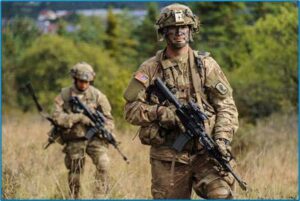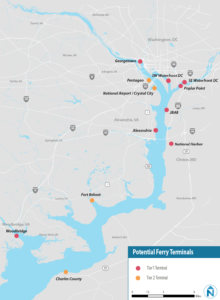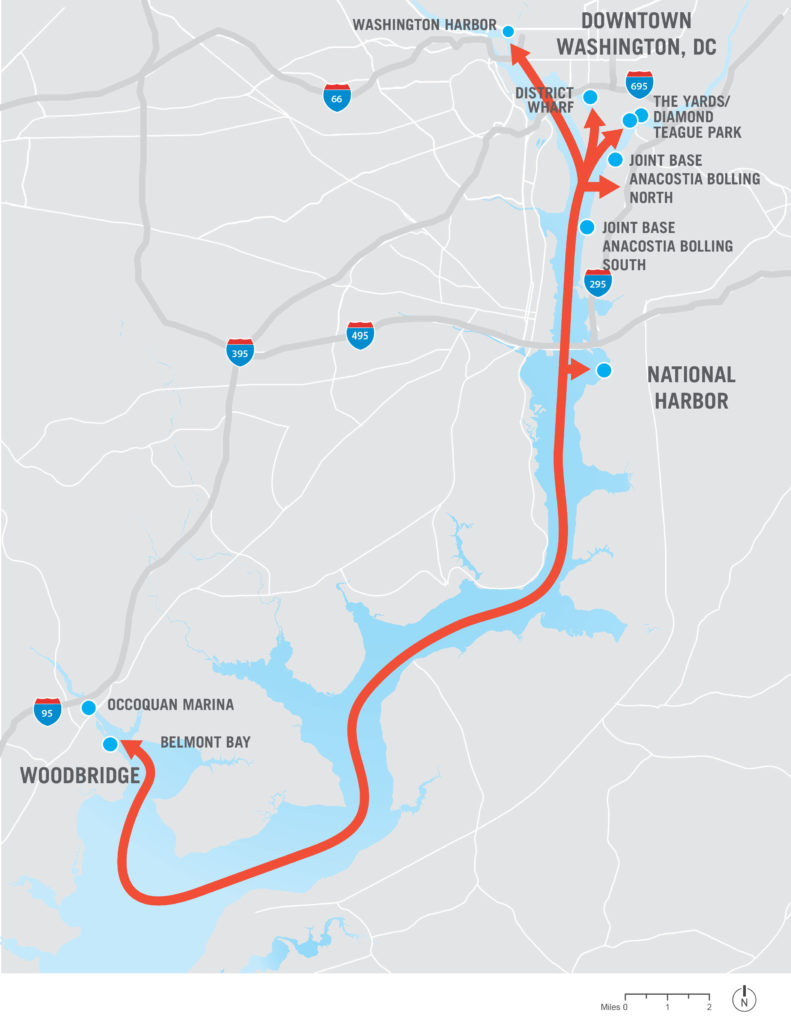The Problem in the Washington D.C. - Metropolitan Area
➢ 5th Largest Increase in Population of a Metro Area (2016 & 2017)
➢ Ranked 6th out of Top 15 Employment Metro Areas (2017)
➢ Ranked 5th in GDP for all Metro Areas (2017)
➢ Northern Virginia is expected to gain 600,000 people and
500,000 jobs over the next twenty-five years. That’s a 23% increase in population and 33% increase in the number of jobs. According to the Metropolitan Washington Council of Government’s most recent Cooperative Forecast, approximately 50% of the new jobs and households in the DC region over the next twenty-five years are expected to come to Northern Virginia.
➢ We have the Amazon Effect 
o HQ2 in Arlington and
growing with warehouse
in the outer region
o 25,000 Employees
(Potential for 12,850 more)
o An estimated share will live around the region.
The Solution: A New Modal System to compliment the transportation system.
The Market: The market analysis was to figure out where does the workforce commute to? To all the large employment centers:
 ➢ Military Installations: Joint Base Anacostia/Bolling (SE DC), Marine Corps Base Quantico, Indian Head, Fort Belvoir, The Navy Yard, & Pentagon
➢ Military Installations: Joint Base Anacostia/Bolling (SE DC), Marine Corps Base Quantico, Indian Head, Fort Belvoir, The Navy Yard, & Pentagon
➢ Department of Homeland Security (SE DC)
➢Amazon HQ2 (Arlington)
➢ National Harbor, Gaylord, and MGM Casino (Southern MD)
➢ The Wharf (SW DC)
➢Georgetown (NW DC)
➢ Old Town Alexandria (Northern Virginia)
 During the Market Analysis over 260 Origin and Destination pairs were identified. The following six markets were identified as Potential Ferry Terminal Sites as having an existing market demand strong enough to support a viable ferry system today: SE & SW DC, Alexandria, Crystal City, Eastern Prince William to JBAB, National Harbor
During the Market Analysis over 260 Origin and Destination pairs were identified. The following six markets were identified as Potential Ferry Terminal Sites as having an existing market demand strong enough to support a viable ferry system today: SE & SW DC, Alexandria, Crystal City, Eastern Prince William to JBAB, National Harbor
Benefit: Creates a System of Resiliency & Redundancy Cost: $100M (Docks, Boats, Operations)
The Benefits of a Fast Ferry System:
➢ Job Creation: Trained and certified in maritime operations and maintenance at GMU Campus
➢ Alleviate Gridlock: The DC Region has the worst gridlock in the US. Several development sites along the Potomac and Anacostia rivers are being developed to include water transportation as part of
their appeal
➢ Low Barrier to Entry: Compared with other transportation modes, lower startup costs, faster to operationalize, more scalable, lower maintenance costs
➢ Economic Development, Commuter Transit, and Tourism/Recreations: Can be built around current and planned employment centers, provides reverse commute option for exburbs, access to retail, recreation & tourist sites, and events on the water (soccer stadium, National’s Park, and new residential developments. Charles County tourism potential as a historical region with regard to the founding of the country (religious freedom birthplace, etc.), and it may be designated as a National Heritage Area in the future).
➢ Emergency Preparedness: Expanded evacuation and rescue capabilities (“Miracle On The Hudson”)
➢ Expanded Military & Homeland Security Capabilities: Conduct water evacuations, mobilize personnel and supplies Key Findings from the Infrastructure Gap Analysis:
➢ Resiliency & Redundancy: Due to tidal waters it would afford avenues for emergency preparedness
➢ Time Savings: Ferry Market from Occoquan Harbour Marina to JBAB/DHS is attractive due to time saving (90 minutes by car; 45 minutes by ferry)
➢ Viability: Market commercially viability; must give consideration to time and cost sensitivities
➢ Reduction in SOVs: Most potential riders are currently in drive alone mode on I-95, 295, 395; and Route One
➢ Primary market: Area appears to receive greatest benefit, meaning potential terminal locations on Occoquan are beneficial
➢ Market Strength: For other DC destinations on SE and SW Waterfront are not as substantial as the singular market to JBAB/DHS, but add strength to the overall system
➢ Military: Interest adds to transportation system strength since the bases are lacking transit alternatives
➢ Questions or concerns:
Northern Virginia Regional Commission
Peggy Tadej
Director of Community & Military Partnerships
[email protected]
Ph: (703) 642-4635
Fax: (703) 642-5077

Waterways are the last untapped resource in our regional transportation system.
The Potomac Commuter Fast Ferry is a proposal to introduce commuter ferry service from Northern Virginia to employment concentrations in Maryland and Washington DC, alleviating congestion along our highways and providing a scenic alternative to driving.